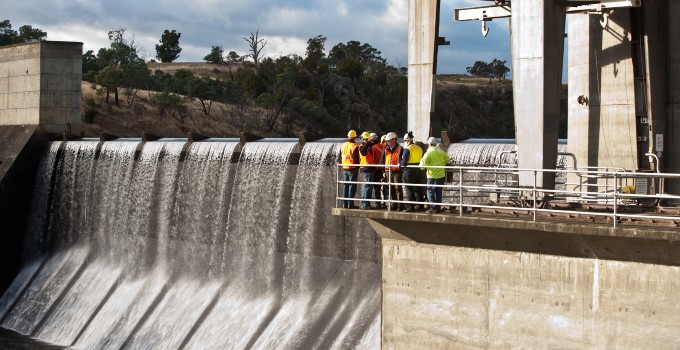THOUGHT LEADERSHIP
What is the value of conventional and pumped hydro storage in a transitioning energy market?

Entura’s Technical Director Power, Donald Vaughan, presented a paper at the global CIGRE Symposium in Cairns, Queensland in September 2023. This is a short summary of the outcomes of the analysis presented in his paper, regarding the value and roles of conventional hydropower, pumped hydro and battery energy storage as the power system transitions to a greater proportion of variable renewable energy in the form of wind and solar PV.
There is a growing need for firming and/or storage in our power systems as we move from predominantly dispatchable sources of power to variable renewable energy (VRE). In the Australian context in the National Electricity Market (NEM), the volume of storage required is expected to be around 46 GW (640 GWh) by 2050 (AEMO 2022). Multiple sources, technologies and methods are being considered but it may be that conventional hydro as well as the more obvious pumped hydro and battery energy storage (PHES and BESS) can play a role.
How do we value storage?
Storage can be valued in many ways. For pure storage, like BESS and PHES, value in a market sense can be measured based on the arbitrage between charging and discharging. Similarly, we can place value on a firming function for VRE. It is more difficult to value the restraint of generation at one time so that stored or withheld energy can be used later. This is the kind of storage offered by conventional hydro sources.
One way of thinking about value is through a measure of realised value vs average value in the market for a particular generator or group of generators. This ‘value factor’ approach is an appropriate measure for storage if we are measuring storage as a contributor to meeting market demand (either local or via interconnections).
One of the problems with the value factor approach is that it is difficult to apply properly without considering market price changes. Introducing plant that can effectively change demand profiles (such as PHES or BESS) will also change the market price, making it difficult to calculate value factors without complex market modelling.
We can instead measure the value of storage by assessing its ability to firm VRE. The measure is based on the ratio of smoothed to unsmoothed VRE with and without the storages applied.
Where there are large amounts of VRE, flexibility from market participants can be valuable. In terms of hydropower generation, conventional hydro plant (storage, Run of the River and head waters) has sufficient flexibility to provide significant market value for modest levels of VRE.
The scale of the transition to VRE will, however, exceed the capacity of conventional hydro to manage variability. Other forms of firming and actual energy shifting, rather than just energy withdrawal (as conventional hydro provides), will be required once the energy balance tips towards energy coming predominantly from VRE sources, with the associated need to manage large diurnal variability as well as longer, weather-based variability. Pumped hydro and battery energy storage will play an important role in providing this more flexible storage.
The role of PHES and BESS in firming
The BESS high power-to-storage ratio allows it to respond to a series of short-lived surpluses or deficits. The PHES deep storage allows it to manage longer duration surpluses or deficits.
The ultimate mix between PHES and BESS in the market is likely to be driven by several factors including the rate of VRE development relative to the level of inter-connection, load growth and VRE mix.
The nature of the VRE will also play a role in determining the storage mix. A predominance of solar will lead to a diurnal pattern that will allow all storage forms to recharge more regularly than would be the case with wind alone. This may allow shallower storage to manage evening peaks with deeper storage reserved for baseload operation overnight.
The economics of BESS and PHES will also play a role in determining the right balance. The market demand for batteries for other purposes and the high market demand for power electronics may yet lead the price/MW of these two storage forms to begin to converge and to limit the depth of storage that will be possible using BESS. PHES on the other hand requires long-term planning, complex approvals processes and less certainty in terms of capturing value from the market. The Integrated System Plan (ISP) of the Australian Energy Market Operator (AEMO) forecasts a large requirement for PHES as deep storage and some very large projects are beginning to be planned.
As these factors play out, the appropriate mix of BESS and PHES will become clearer – but both will certainly play a role in Australia’s clean energy transition.
For more information about the analysis behind his paper, or to discuss how conventional hydropower, pumped hydro and battery storage can be valuable to your situation, contact Donald Vaughan.
September 6, 2023






